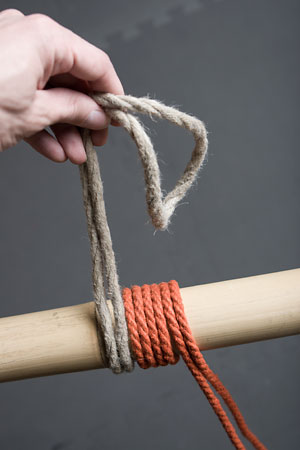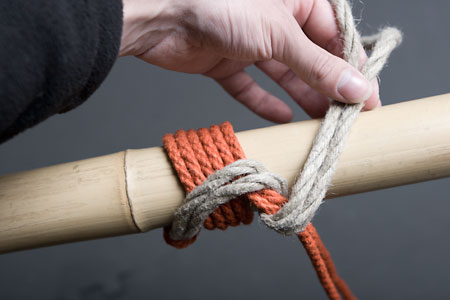I mentioned when I first posted the RSB that I considered it particularly useful for tying someone who was struggling, because it didn't require leaving room to pass a line under the cuff. However, if you're going to leave someone in a tie for a while, or if you're going to suspend with it, you don't want the cuff too tight. I recently had exactly this situation come up in preparing my performance for Citadel's post-pride party/demos, where I wanted to do a "take up", tying a struggling bottom into a puppet suspension.
It turns out, you can actually tie the RSB onto a moving target in a way that maintains space between the cuff and the limb. Here's a quick, unscripted video, just to show putting a bunch of column ties onto someone who's resisting:
And here's an illustration/explanation of what I was doing, there:

